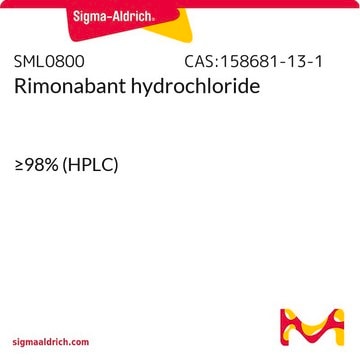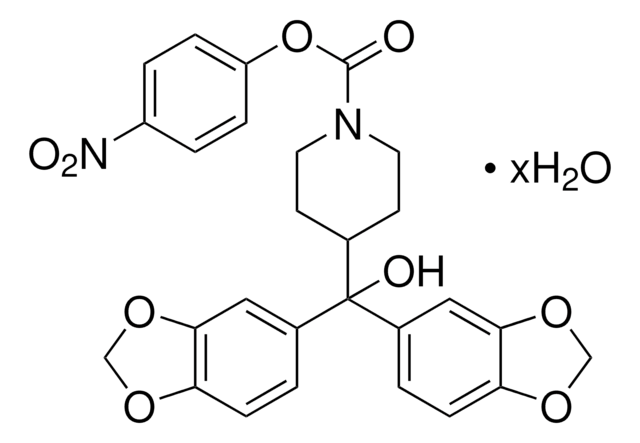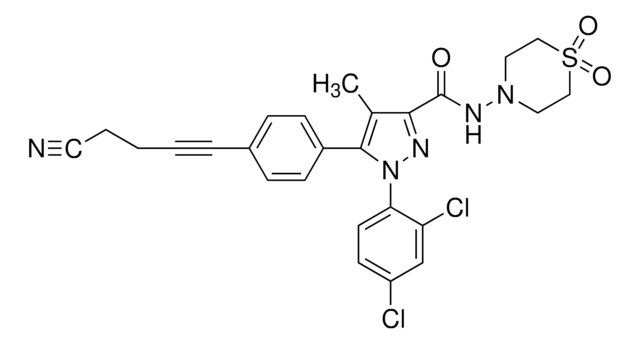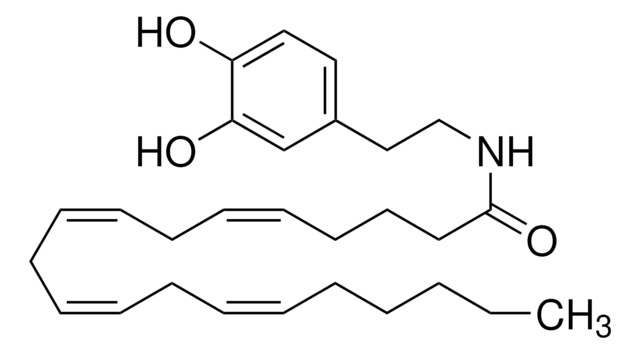A6226
AM251
>98% (HPLC), solid, cannabinoid receptor (CB1) antagonist
Synonym(e):
1-(2,4-Dichlorophenyl)-5-(4-iodophenyl)-4-methyl-N-1-piperidinyl-1H-pyrazole-3-carboxamide
About This Item
Empfohlene Produkte
product name
AM251, >98% (HPLC), solid
Qualitätsniveau
Assay
>98% (HPLC)
Form
solid
Farbe
white
Löslichkeit
DMSO: >10 mg/mL
H2O: insoluble
Ersteller
Sanofi Aventis
SMILES String
Cc1c(nn(-c2ccc(Cl)cc2Cl)c1-c3ccc(I)cc3)C(=O)NN4CCCCC4
InChI
1S/C22H21Cl2IN4O/c1-14-20(22(30)27-28-11-3-2-4-12-28)26-29(19-10-7-16(23)13-18(19)24)21(14)15-5-8-17(25)9-6-15/h5-10,13H,2-4,11-12H2,1H3,(H,27,30)
InChIKey
BUZAJRPLUGXRAB-UHFFFAOYSA-N
Angaben zum Gen
mouse ... Cnr1(12801) , Cnr2(12802)
rat ... Cnr1(25248)
Anwendung
Biochem./physiol. Wirkung
Leistungsmerkmale und Vorteile
Sonstige Hinweise
H-Sätze
P-Sätze
Gefahreneinstufungen
Aquatic Chronic 4
Lagerklassenschlüssel
11 - Combustible Solids
WGK
WGK 3
Flammpunkt (°F)
Not applicable
Flammpunkt (°C)
Not applicable
Persönliche Schutzausrüstung
dust mask type N95 (US), Eyeshields, Gloves
Analysenzertifikate (COA)
Suchen Sie nach Analysenzertifikate (COA), indem Sie die Lot-/Chargennummer des Produkts eingeben. Lot- und Chargennummern sind auf dem Produktetikett hinter den Wörtern ‘Lot’ oder ‘Batch’ (Lot oder Charge) zu finden.
Besitzen Sie dieses Produkt bereits?
In der Dokumentenbibliothek finden Sie die Dokumentation zu den Produkten, die Sie kürzlich erworben haben.
Kunden haben sich ebenfalls angesehen
Unser Team von Wissenschaftlern verfügt über Erfahrung in allen Forschungsbereichen einschließlich Life Science, Materialwissenschaften, chemischer Synthese, Chromatographie, Analytik und vielen mehr..
Setzen Sie sich mit dem technischen Dienst in Verbindung.













